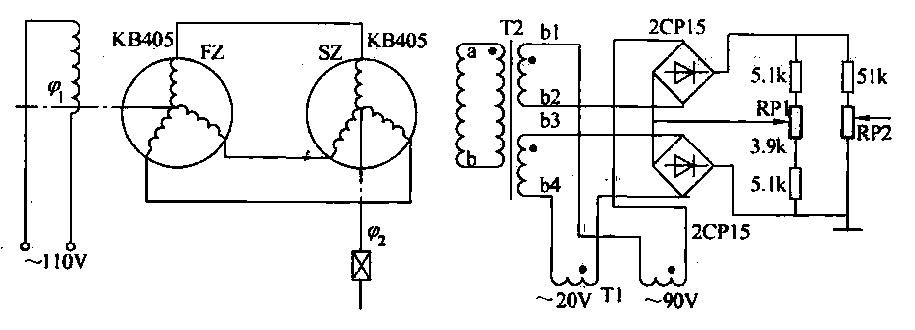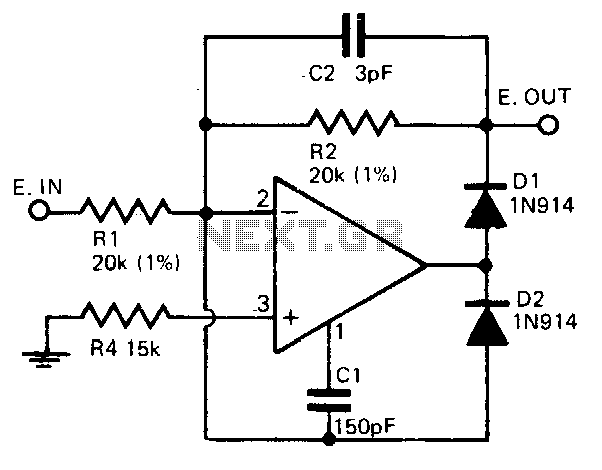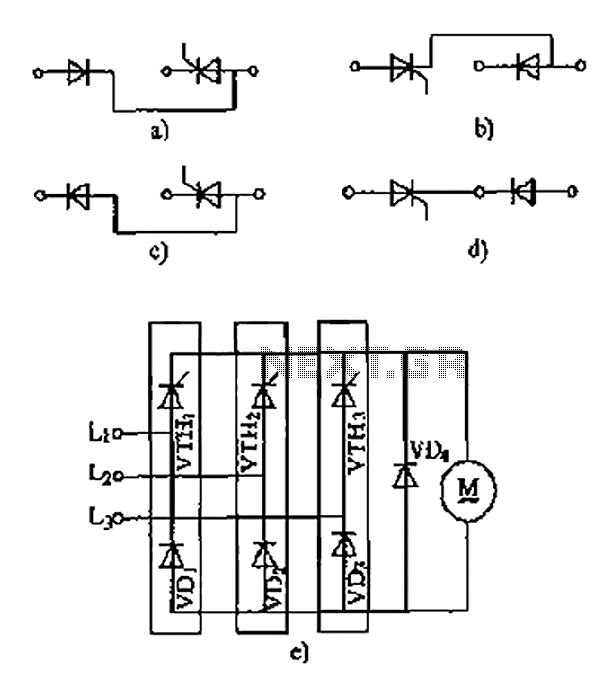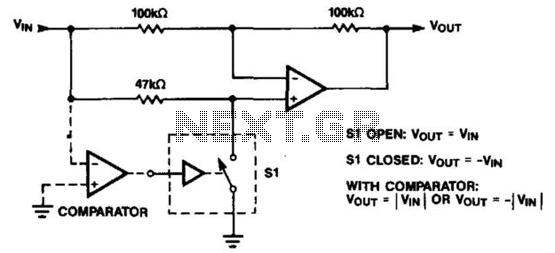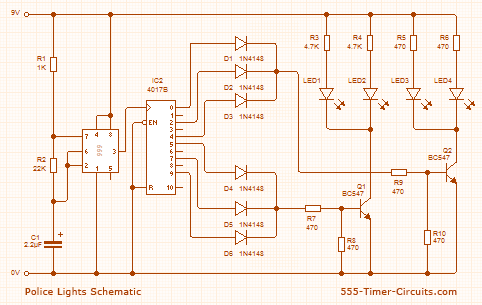
Non-diode rectifier
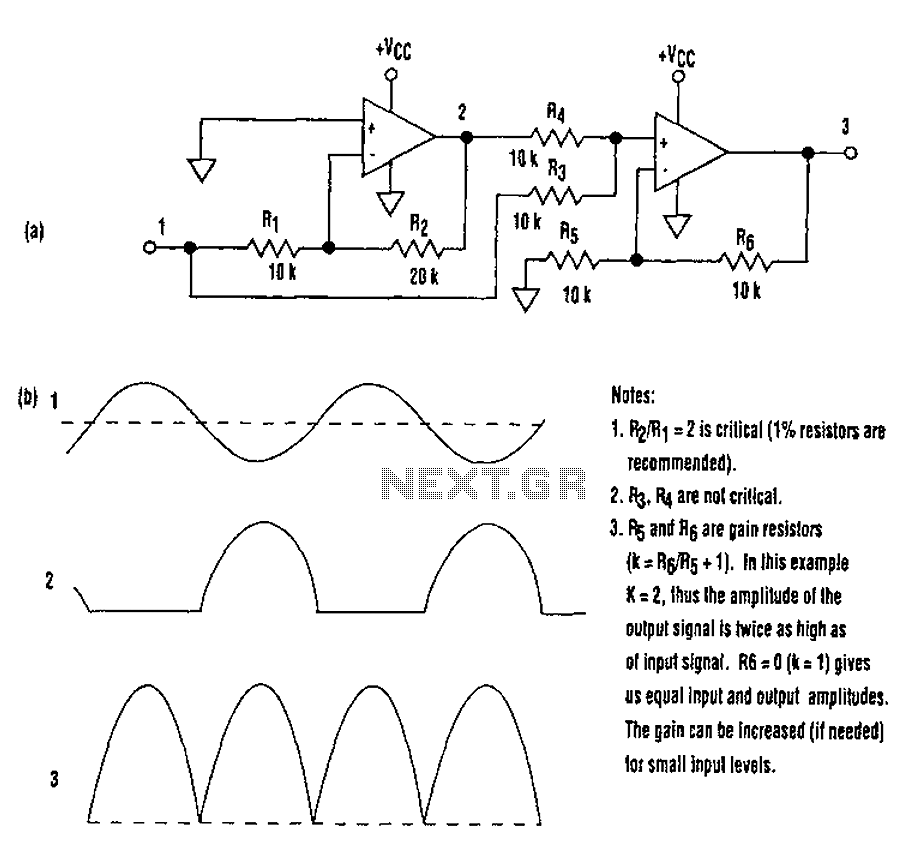
When utilizing a single-supply operational amplifier in a bipolar signal environment, achieving simple functions can be challenging. This often necessitates the inclusion of additional operational amplifiers and other electronic components. The advantages of this configuration can be observed in the simple circuit depicted in (A). This circuit operates without the need for diodes and functions as a high-precision full-wave rectifier, with the rectifier's performance being equivalent to that of the operational amplifier itself, exhibiting a high-frequency limit.
In the context of electronic circuit design, the use of a single-supply operational amplifier (op-amp) in a bipolar signal environment presents unique challenges. The op-amp is typically designed to operate with dual power supplies, which allows for a more straightforward handling of both positive and negative signal swings. However, when constrained to a single supply, the design must adapt to accommodate the bipolar nature of the input signals.
The proposed circuit (A) demonstrates a solution to this problem by utilizing a high-precision full-wave rectifier configuration. This approach eliminates the need for diodes, which are commonly used in traditional rectifier designs. Diodes introduce forward voltage drops and can limit the frequency response of the circuit. By employing an op-amp in the rectification process, the circuit achieves improved accuracy and a wider bandwidth.
The full-wave rectifier circuit operates by taking advantage of the op-amp's ability to amplify and invert signals. The feedback network around the op-amp is configured to ensure that both halves of the input waveform are utilized effectively. This results in a rectified output that closely follows the input signal's envelope, providing a high-fidelity representation of the original waveform.
Moreover, the high-frequency limit of the op-amp plays a crucial role in determining the performance of the rectifier. The selected op-amp must have a sufficient gain-bandwidth product to handle the frequencies of interest without significant distortion. The design may also include additional passive components, such as resistors and capacitors, to fine-tune the response and stability of the circuit.
In summary, the circuit in (A) exemplifies a sophisticated approach to rectification using a single-supply op-amp in a bipolar signal environment. By eliminating diodes and leveraging the op-amp's capabilities, the design achieves high precision and an extended frequency response, making it suitable for various applications where accurate signal processing is required. As we all know, when a single-supply op amp, a bipolar signal environment to achieve a simple function may be difficult. Sometimes the need for additional operational amplifier s and other electronic components. Think about it, this pattern is there any advantage The answer lies in the simple circuit in (A). Do not need diodes, this circuit is a high-precision full-wave rectifier, the rectifier is equal to the op amp itself with high-frequency limit.
In the context of electronic circuit design, the use of a single-supply operational amplifier (op-amp) in a bipolar signal environment presents unique challenges. The op-amp is typically designed to operate with dual power supplies, which allows for a more straightforward handling of both positive and negative signal swings. However, when constrained to a single supply, the design must adapt to accommodate the bipolar nature of the input signals.
The proposed circuit (A) demonstrates a solution to this problem by utilizing a high-precision full-wave rectifier configuration. This approach eliminates the need for diodes, which are commonly used in traditional rectifier designs. Diodes introduce forward voltage drops and can limit the frequency response of the circuit. By employing an op-amp in the rectification process, the circuit achieves improved accuracy and a wider bandwidth.
The full-wave rectifier circuit operates by taking advantage of the op-amp's ability to amplify and invert signals. The feedback network around the op-amp is configured to ensure that both halves of the input waveform are utilized effectively. This results in a rectified output that closely follows the input signal's envelope, providing a high-fidelity representation of the original waveform.
Moreover, the high-frequency limit of the op-amp plays a crucial role in determining the performance of the rectifier. The selected op-amp must have a sufficient gain-bandwidth product to handle the frequencies of interest without significant distortion. The design may also include additional passive components, such as resistors and capacitors, to fine-tune the response and stability of the circuit.
In summary, the circuit in (A) exemplifies a sophisticated approach to rectification using a single-supply op-amp in a bipolar signal environment. By eliminating diodes and leveraging the op-amp's capabilities, the design achieves high precision and an extended frequency response, making it suitable for various applications where accurate signal processing is required. As we all know, when a single-supply op amp, a bipolar signal environment to achieve a simple function may be difficult. Sometimes the need for additional operational amplifier s and other electronic components. Think about it, this pattern is there any advantage The answer lies in the simple circuit in (A). Do not need diodes, this circuit is a high-precision full-wave rectifier, the rectifier is equal to the op amp itself with high-frequency limit.
